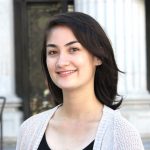
Open house for “Lima 2100: Collective Resilience through Adaptive Urbanism” in the virtual Museo de Arte Contemporáneo (MAC Lima) gallery, created and curated by Gabriel Kaprielian exhibiting work of American Arts Incubator — Peru artists (2020).
It’s been a little over a month since the American Arts Incubator — Peru (AAI Peru) program was completed. Reflecting back on the month-long exchange, the global pandemic and virtual format did not dampen the enthusiasm and brilliance of the participating artists. Instead, it challenged us to adapt and respond to the moment, framed by the past, while projecting onto the future. Meaningful connections were made, ideas and knowledge were shared, and amazing new artwork was created. By all accounts, the program was a huge success! Thanks to the dedication of many wonderful people that made this possible.
I led four workshops that introduced technology platforms, theoretical frameworks, encouraged discussion, and led to short exercises applying these tools with artists' ideas. Workshop 1 involved a collective “Psycho-geographic Mapping” of Lima using a virtual whiteboard canvas. In Workshop 2, artists created “Postcards from the Future” that showcased speculative visions of Lima in the year 2100. Workshop 3 introduced tools for digital 3D modeling to create a collaborative “Monument to the Pandemic.” Workshop 4 demonstrated the use of augmented and virtual reality to visualize the artists' work.
There were two guest speaker panels that introduced further discussion on the social challenge of urban development in Lima, focusing on the themes of climate change, social equity, and urban health. The first panel was centered around public space and included Dr. Patricia Kim (Monument Lab), Dr. Ghigo DiTommaso (Gehl Architects), and Lucía Nogales (Ocupa tu Calle). The second panel focused on socially-responsive artwork and included Nicolas Gomez Echeverri (MAC Lima), Natalija Boljsakov (UTEC), Ferran Gisbert (UTEC), and Kiko Mayorga (UTEC).
For the last ten days of the program, each artist created new artwork responding to the theme, “Lima 2100 – Collective Resilience through Adaptive Urbanism.” These works took the form of 2D collage, audio and video, and digital 3D forms. I was amazed by the creativity and thoughtfulness of each project and the passion each artist demonstrated in developing their work in such a short amount of time.
Artists presented their artworks and concepts to a guest panel where they received outside feedback. The final exhibition was originally planned to take place in the Museo de Arte Contemporáneo (MAC Lima). Instead, we created a virtual reality gallery in Mozilla Hubs of MAC Lima with a curated exhibition of each artist’s work. This was the first time we were able to gather in the same "room," walking around and chatting, viewing the artwork as a collective project.
I want to give a big thank you to all of the participating artists, our partners in Lima including UTEC, MAC Lima, and the U.S. Embassy, as well as our guest speakers and panelists. This program has introduced new ideas and understanding in my creative practice and expanded my ecosystem of collaborators. I am grateful for the opportunity to have taken part in AAI Peru.
